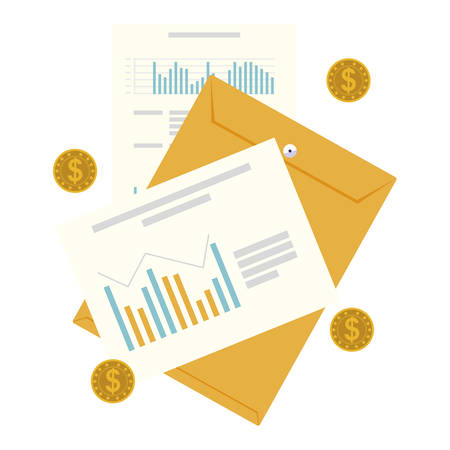Understanding Dividend ETFs
If you’re exploring ways to grow your wealth while enjoying a steady stream of income, Dividend ETFs (Exchange-Traded Funds) might just catch your attention. These investment vehicles are designed to track indexes composed primarily of dividend-paying stocks—often from well-established U.S. companies with a history of rewarding shareholders. But what exactly are Dividend ETFs, and how do they fit into the broader landscape of the U.S. stock market?
At their core, Dividend ETFs pool investors’ money to purchase a diversified basket of stocks that regularly pay dividends. This approach allows investors to gain exposure to a wide range of companies—spanning sectors like utilities, consumer goods, financials, and more—all in one convenient fund. Rather than picking individual dividend stocks yourself, you benefit from built-in diversification and professional management.
Structurally, Dividend ETFs trade on major U.S. exchanges just like regular stocks. You can buy or sell shares throughout the trading day at market prices, making them highly liquid and accessible for everyday investors. The dividends collected from the underlying companies are typically paid out to ETF shareholders either monthly or quarterly, providing a reliable income stream that can be reinvested or used as cash flow.
This unique structure makes Dividend ETFs an appealing option for those looking for both growth potential and consistent income—two goals that resonate strongly with many American investors planning for retirement or seeking financial independence.
2. Potential Benefits of Investing in Dividend ETFs
Dividend ETFs have become increasingly popular among American investors seeking a blend of growth, income, and stability in their portfolios. Let’s explore some of the key advantages they offer:
Passive Income Stream
One of the most attractive features of dividend ETFs is the regular passive income they generate. By investing in a basket of dividend-paying stocks, you can receive quarterly or even monthly dividend payouts without having to manage individual stock selections yourself. This predictable cash flow can be especially appealing for retirees or anyone looking to supplement their income.
Diversification Benefits
Diversification is a cornerstone of smart investing, and dividend ETFs provide this by pooling together a wide range of companies across sectors and industries. This approach helps reduce the risk associated with holding single stocks while still capturing the upside potential from different segments of the market.
| Benefit | How Dividend ETFs Help |
|---|---|
| Sector Diversification | Exposure to multiple sectors (e.g., technology, healthcare, consumer goods) |
| Company Risk Reduction | No reliance on the success or failure of one company |
| Market Stability | Smoother returns during market volatility due to spread out holdings |
Tax Considerations for U.S. Investors
For American investors, tax efficiency is an important factor when choosing investment vehicles. Qualified dividends from most U.S. companies are typically taxed at a lower rate than ordinary income—ranging from 0% to 20% depending on your taxable income bracket. Additionally, many dividend ETFs are structured to minimize capital gains distributions, which can further enhance after-tax returns.
Key Tax Advantages:
- Lower Tax Rate on Qualified Dividends: Many dividends paid by U.S. companies qualify for preferential tax treatment.
- Tax-Advantaged Accounts: Holding dividend ETFs in IRAs or 401(k)s allows for tax-deferred or even tax-free growth.
- Simplified Tax Reporting: ETFs generally provide consolidated reporting, making it easier come tax time.
Summary Table: Dividend ETF Benefits for U.S. Investors
| Benefit Category | Description |
|---|---|
| Income Generation | Regular dividend payouts create a steady income stream. |
| Diversification | Reduces risk through broad exposure across sectors and companies. |
| Tax Efficiency | Pays qualified dividends at favorable rates; fits well in retirement accounts. |
| Simplicity & Convenience | No need for active management; easy to buy and hold through brokerage accounts. |

3. Risks and Limitations
While dividend ETFs can be a valuable addition to your investment portfolio, it’s important to recognize the risks and limitations involved before you dive in. One of the most notable risks is market volatility. Like all equities, the value of dividend ETFs can fluctuate with the broader stock market. Even companies with a long history of paying dividends are not immune to sharp declines during economic downturns or periods of heightened uncertainty.
Another key factor to consider is interest rate sensitivity. Dividend-paying stocks often compete with bonds for investor attention, especially when interest rates rise. As rates go up, newly issued bonds may offer higher yields, which can make dividend stocks—and by extension, dividend ETFs—less attractive. This can put downward pressure on ETF prices and potentially impact your returns.
Additionally, many dividend ETFs have concentrated sector exposures. For example, these funds frequently hold large positions in sectors like utilities, consumer staples, or financials because these industries tend to offer stable and consistent dividends. However, this concentration means your portfolio might be less diversified than you think. If one sector faces headwinds—like regulatory changes or shifts in consumer demand—it could have an outsized impact on your ETF’s performance.
It’s also worth noting that while dividends can provide steady income, they are never guaranteed. Companies can reduce or suspend their dividend payments at any time due to financial stress or changing business priorities. As an investor, it’s crucial to stay informed about what’s happening within both the ETF and its underlying holdings.
4. Comparing Dividend ETFs to Other Investment Options
When it comes to building a robust investment portfolio, understanding how Dividend ETFs stack up against other popular choices is key. Let’s break down the differences between Dividend ETFs, individual dividend stocks, broad market ETFs, and other income-focused investments that are common in the U.S. market.
Differentiating Your Choices
| Investment Option | Key Features | Pros | Cons |
|---|---|---|---|
| Dividend ETFs | Diversified baskets of dividend-paying stocks, managed by professionals. | Broad diversification, lower risk than individual stocks, convenient for passive investors. | Management fees, less control over specific holdings. |
| Individual Dividend Stocks | Direct ownership in companies that pay dividends; you choose each stock yourself. | Potential for higher yields, full control over your portfolio, possible tax advantages if held long-term. | Lack of diversification, more research required, higher risk from single-stock exposure. |
| Broad Market ETFs (e.g., S&P 500 ETFs) | Tracks a wide index including both dividend and non-dividend paying companies. | Diversification across sectors, generally low fees, good for long-term growth. | Dividend yield may be lower than dedicated dividend ETFs or stocks. |
| Other Income-Focused Investments (REITs, Bonds, etc.) | Includes real estate investment trusts (REITs), bonds, and preferred stocks focused on generating income. | Diversifies sources of income, potential hedge against stock volatility. | Interest rate sensitivity (bonds), sector-specific risks (REITs), may require more active management. |
The American Investor’s Perspective
For many Americans planning for retirement or seeking steady cash flow, Dividend ETFs offer a balanced approach—they provide access to a range of established companies without the heavy lifting of researching individual stocks. However, if you’re looking for potentially higher returns and are comfortable doing your own research, picking individual dividend stocks might be appealing. Broad market ETFs can be great for those prioritizing overall growth rather than income alone. Meanwhile, other income-focused investments like REITs or bonds can add valuable diversification and stability to your income stream—especially when interest rates shift or economic cycles change.
Your Personal Investment Mix Matters
No single option fits everyone’s needs. Consider your financial goals: Are you aiming for steady income now or capital growth down the road? What level of risk are you comfortable with? Blending several of these options can help you create a resilient and rewarding investment portfolio tailored to your American lifestyle and long-term plans.
5. Who Should Consider Investing in Dividend ETFs?
Dividend ETFs can be a smart addition to many investment portfolios, but they aren’t necessarily right for everyone. Let’s break down who stands to benefit the most from this investment approach by looking at goals, time horizon, and risk tolerance.
Income Seekers
If you’re an investor who values regular cash flow—such as retirees or those planning for retirement—dividend ETFs can provide steady income through quarterly or even monthly dividend payments. This makes them a popular choice for anyone looking to supplement Social Security or pensions with consistent payouts.
Long-Term Investors
For investors with a longer time horizon, especially those in their early or mid-career years, dividend ETFs offer the potential for both capital appreciation and reinvested dividends that can compound over time. By reinvesting dividends, you could see your wealth grow faster thanks to the power of compounding returns.
Conservative Risk Tolerance
If market volatility keeps you up at night, dividend ETFs may appeal to you. Companies that pay regular dividends are often well-established and financially stable, which tends to make their stock prices less volatile than high-growth, no-dividend alternatives. While no investment is risk-free, these funds can help cushion your portfolio during market downturns.
Diversification Seekers
Diversifying across various sectors and companies is one of the main benefits of ETFs. If you’re looking to avoid putting all your eggs in one basket, a dividend ETF offers instant diversification within the realm of dividend-paying stocks, potentially reducing your overall portfolio risk.
Who Might Want to Look Elsewhere?
If your primary goal is rapid growth and you’re comfortable with higher volatility, you might find dividend ETFs too conservative. Younger investors with long time horizons sometimes prefer growth stocks or sector-specific ETFs that focus on technology or emerging markets instead.
Ultimately, whether a dividend ETF fits your needs depends on your financial goals, investment timeline, and comfort with risk. Take a look at your personal situation—and don’t hesitate to consult a financial planner if you want tailored guidance for building your portfolio.
6. Tips for Choosing the Right Dividend ETF
When it comes to investing in dividend ETFs, making the right choice can have a big impact on your portfolio’s growth and stability. Here are some practical tips tailored for U.S. investors to help you evaluate and select the most suitable dividend ETF for your financial goals.
Look Beyond the Yield
It’s tempting to chase the highest yield, but remember: a higher yield can sometimes signal higher risk. Instead of focusing only on the payout percentage, consider the consistency of those dividends over time. Stable or growing dividends often reflect financially healthy companies within the ETF.
Check the Expense Ratio
The expense ratio tells you how much of your investment goes towards fund management fees each year. Even small differences matter over time—a lower expense ratio means more of your money stays invested and working for you. Compare similar ETFs and aim for funds with competitive costs.
Review Underlying Holdings
Take a close look at what’s actually inside the ETF. Are you comfortable with its sector concentration? Is it dominated by a few large companies, or is it well-diversified? U.S.-focused dividend ETFs may concentrate in sectors like utilities, consumer staples, or financials—make sure this aligns with your overall investment strategy.
Consider Tax Efficiency
Dividends are generally taxable in the year they’re paid out, so think about which account type (taxable brokerage vs. retirement) best suits your needs. Some ETFs are structured to be more tax-efficient than others, which could make a difference come tax season.
Evaluate Fund Size and Liquidity
Larger ETFs typically have better liquidity, meaning shares can be bought or sold easily without affecting prices too much. This also usually leads to tighter bid-ask spreads, saving you money when trading.
Read the Fine Print
Every ETF has a prospectus detailing its strategy, risks, and objectives. Make it a habit to review these documents before investing. Look for transparency regarding rebalancing policies, dividend schedules, and any unique features that set one fund apart from another.
By taking these steps—and regularly reviewing your choices as market conditions change—you’ll be better positioned to select dividend ETFs that support both your income needs and long-term financial health.

